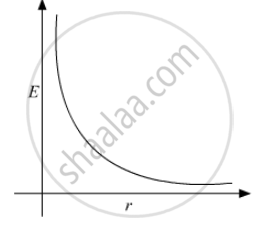Advertisements
Advertisements
प्रश्न
Draw a graph to show the variation of E with perpendicular distance r from the line of charge.
उत्तर
From the equation E = `lambda/(2piepsilon_0r)`, where r is perpendicular distance from the line of charge, we can see that `E prop "1/r"`

APPEARS IN
संबंधित प्रश्न
Explain why, for a charge configuration, the equipotential surface through a point is normal to the electric field at that point
If the point charge is now moved to a distance 'd' from the centre of the square and the side of the square is doubled, explain how the electric flux will be affected.
Use Gauss' law to derive the expression for the electric field `(vecE)` due to a straight uniformly charged infinite line of charge density λ C/m.
State Gauss’Law.
Which statement is true for Gauss law -
What is the nature of the Gaussian surface involved in the Gauss law of electrostatics?
Sketch the electric field lines for a uniformly charged hollow cylinder shown in figure.

Consider a sphere of radius R with charge density distributed as
ρ(r) = kr for r ≤ R
= 0 for r > R
- Find the electric field at all points r.
- Suppose the total charge on the sphere is 2e where e is the electron charge. Where can two protons be embedded such that the force on each of them is zero. Assume that the introduction of the proton does not alter the negative charge distribution.
- Obtain the expression for the electric field intensity due to a uniformly charged spherical shell of radius R at a point distant r from the centre of the shell outside it.
- Draw a graph showing the variation of electric field intensity E with r, for r > R and r < R.
A solid metal sphere of radius R having charge q is enclosed inside the concentric spherical shell of inner radius a and outer radius b as shown in the figure. The approximate variation of the electric field `vecE` as a function of distance r from centre O is given by ______.

